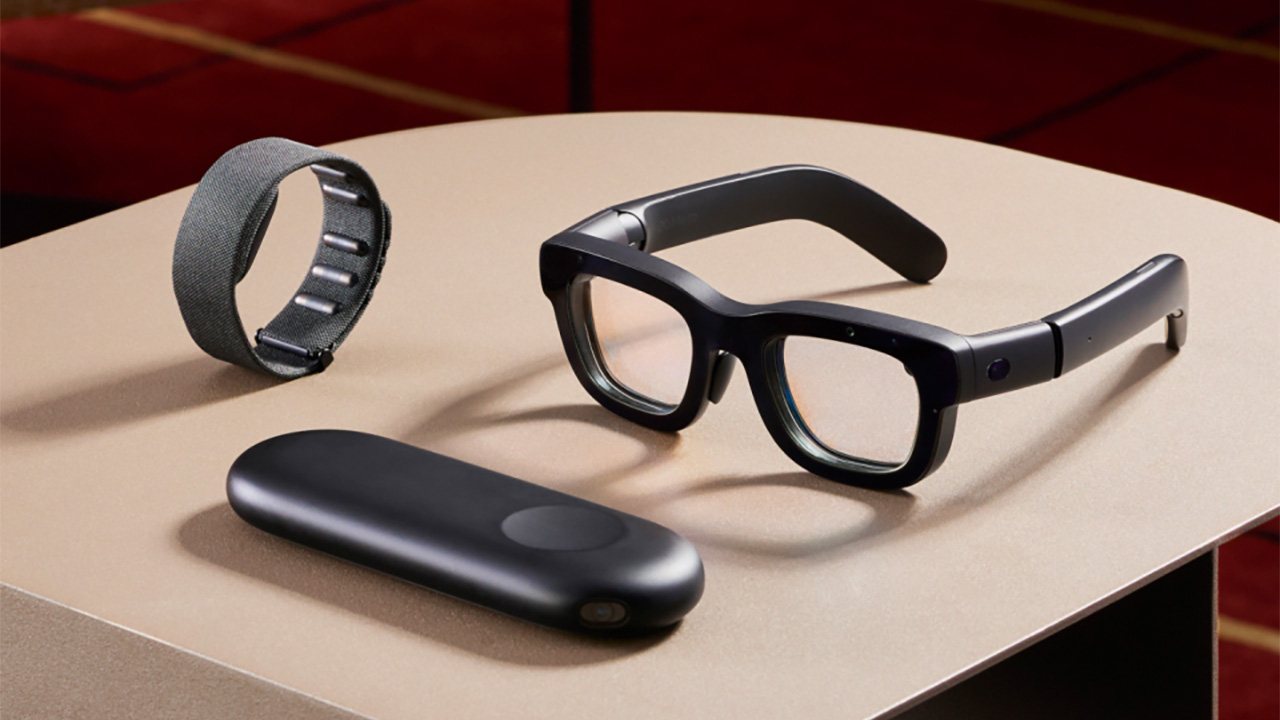Sony WF-1000XM5 review: the new in-ear kings?
The highly anticipated kings of earbuds return, but do Sony's WF-1000XM5 retain the crown?

Sony was always on a hiding to nothing with the WF-1000XM5 - get it wrong and it’s a major story, get it right (yet again) and it’s no more than we all expected. But while the company hasn’t got it ‘wrong’ exactly, the WF-1000XM5 aren’t the consummate all-rounders of the product they replace. Nonetheless these are no doubt excellent-sounding earbuds that, given their new smaller size and weight reduction, will hugely appeal to many.
-
+
Balanced, detailed and perky sound
-
+
Thoroughly specified
-
+
Useful, extensive and stable control app
-
+
Small, light and comfortable design
-
-
Slightly inhibited dynamics
-
-
Unremarkable noise-cancellation
-
-
Unremarkable-er call quality
-
-
Ordinary battery life
Why you can trust T3

Usually, the announcement of a new pair of true wireless in-ear headphones doesn’t create much excitement. After all, it seems to happen almost every day. But when the new true wireless in-ears in question are made by Sony, and they’re the long-awaited replacement for a product that has spent the last two years at the top of more-or-less every list of ‘the best true wireless in-ear headphones you can buy’, well, that’s a bit different.
To say the new Sony WF-1000XM5 are eagerly anticipated is to understate the situation somewhat. Even though the predecessor was getting decidedly long in the tooth, the outgoing WF-1000XM4 were never less than ultra-competitive - and so not only do the WF-1000XM5 have to improve on one of the most acclaimed and successful products Sony has ever delivered, they have to triumph over the numerous rival designs launched by numerous rival brands in the meantime too.
Sony WF-1000XM5: Price & Availability
The Sony WF-1000XM5 true wireless in-ear headphones go on sale in August 2023, and in the United Kingdom they’ll be priced at £259 a pair, while in the USA they'll cost $299 at launch.
The WF-1000XM5 are therefore priced like a premium product. Since the launch of the WF-1000XM4 in June 2021, excellent true wireless designs from the likes of Apple, Bose, Bowers & Wilkins, Sennheiser and Technics (to name just a few) have gone on sale at similarly ambitious prices - so the WF-1000XM5 have their work cut out if they're going to justify that price.
Sony WF-1000XM5 review: Features & What's New?

Context is everything, of course - and it’s fair to say that if you could judge a product purely on the number of features it incorporates relative to its closest rivals, the Sony WF-1000XM5 would be home free. If there’s a true wireless in-ear headphones feature this product goes without, it’s not one I’ve ever encountered.
At the heart of the WF-1000XM5 experience is the newly developed Integrated Processor v2. As well as facilitating 24-bit audio processing and analogue amplification, it works in conjunction with the HD Noise Cancelling Processor QN2e to deliver what Sony is claiming (and with a straight face) to be “the best noise-cancelling performance on the market”.
Three microphones per earbud, including dual feedback mics, take care of noise-cancellation, telephony, interaction with voice assistants and the very useful ‘Speak to Chat’ feature (which pauses playback when it detects you’ve spoken). Call quality is further bolstered by a Deep Neural Network-based AI noise reduction algorithm and bone conduction sensors, along with a wind-noise reduction structure. And as well as the active electronic hardware dealing with noise-cancellation (the quality of which can be adjusted and finessed in the control app), Sony has developed polyurethane foam ear-tips that are designed to reduce noise in the upper-frequency range.
The earbuds connect wirelessly to your source player using Bluetooth 5.3, and there’s compatibility with Sony’s hi-res LDAC codec as well as SBC and AAC. Sony is pleased to announce the WF-1000XM5 have multi-point connectivity - although the ability to connect to a couple of devices at once is made to look a little ordinary by the triple-point connectivity offered by the Technics EAH-AZ80.

To try and make the most of your slightly lower-resolution content, the WF-1000XM5 have the latest version of Sony’s DSEE feature (DSEE Extreme) which attempts to upscale lossy digital audio files in real-time. They’re also compatible with the company’s 360 Reality Audio spatial audio feature (again via the control app, and only if your streaming service of choice supports it, of course), and have head-tracking technology which analyses your head movement and adjusts the sound-field accordingly.
So when you’re both listening to and watching content (YouTube, for instance, has plenty of spatial audio content), sounds should align precisely with your screen even as you move your head around. And these technologies also allow the WF-1000XM5 to offer audio experiences beyond movies and music - augmented reality games like Ingress from Niantic use head-tracking to convey sound from different directions, depending on the on-screen action.
No matter the content you decide you want to hear, though, it’s ultimately served to your ears by a couple of newly designed drive units. Dynamic Driver X is an 8.4mm dynamic driver (and so is significantly larger than the 6mm driver in the outgoing XM4) with an expansive frequency response (the exact figures of which are, for now, a bit of a secret).
Sony WF-1000XM5 review: Performance

It would be quite a story, wouldn’t it, if Sony had somehow contrived to deliver a pair of true wireless in-ear headphones at a premium price that weren’t up to snuff? Imagine how much fun to read (and to write, to be fair) that would be…
Well, that excitement will have to wait for another day, because in the most meaningful respect the WF-1000XM5 are very good indeed. But it needs pointing out that’s not the same as them being class-leaders - or, in all honesty, any better (in some ways) than the product they replace. Sony’s certainly done the business when it comes to producing a product that’s smaller, lighter and more comfortable than the one it replaces - but in other ways, very little seems to have happened in the two years since the WF-1000XM4 launched.
Where out-and-out sound quality is concerned, there’s very little to take issue with. The WF-1000XM5 are a balanced, insightful listen with good soundstaging ability, even better frequency integration, and timing that’s a match for any alternative you care to mention. They’re tonally consistent from the top of the frequency range to the bottom, give each area of that range exactly as much emphasis as a given recording demands, and maintain this commendably judicious attitude no matter the volume level at which you listen.
Treble sounds are crisp but not abrasive, and there’s decent substance to go along with the shine. In the midrange, the WF-1000XM5 communicate freely - they give vocalists every opportunity to express themselves, grant voices as much character as they require and (thanks to their ability to create and organise a soundstage) allow them space to do their thing without the other elements of the recording treading on their metaphorical toes.

At the bottom of the frequency range there’s decent extension, plenty of variation and the sort of straight-edged attack that keeps up the momentum and allows rhythms proper expression. There’s not quite the substance to bass sounds that would allow the WF-1000XM5 to be described as ‘punchy’, but their rapidity and fine detail retrieval go a long way towards making up for it. It’s also possible to increase the level of bass in the control app - but that simply makes it louder compared to the rest of the frequency range, rather than any more substantial or meaningfully punchier.
Where low-level dynamics are concerned, the harmonic variations that are apparent in a solo instrument (for example), the Sony are attentive and actually quite adept. Listen to some unaccompanied piano, for example, and those harmonics that exist either side of the fundamental are given prominence and context. But where the broader dynamics of volume variation are concerned, the WF-1000XM5 are a little less certain - they just don’t put as much distance between the quietest and the loudest moments of a given recording as is ideal.
So it’s the other major areas of performance that cause the WF-1000XM5 some minor problems. Call quality, for example, is ordinary at best - for all the promise of the wind reduction structure, the bone-conduction pick-up and AI noise-reduction, received speech during a call is compressed and unnatural. It’s possible to detect the noise-reduction hardware doing its thing as it intrudes on and alters the sound of the speaker’s voice in a seemingly arbitrary manner. No matter if you’re using the Sony to make or receive a call, intelligibility is an issue more often than it should be. Certainly more often than it is when using some alternative earbuds.
Active noise-cancellation (ANC), too, is nothing special - quite how Sony decided the WF-1000XM5 represent “the best noise-cancelling performance on the market” is anyone’s guess. Switch ANC on in a noisy environment and external sound interference is reduced, no two ways about it - and it’s reduced without altering the sound of the music you’re listening to in any way, too. But the Sony don’t do a complete job, and so noise isn’t, strictly speaking, ‘cancelled’. The list of price-comparable alternative designs that do as good a job, if not better, where active noise-cancellation is concerned is not especially brief. The Bose QuietComfort Earbuds 2, for example, have the upper hand in this regard.
Sony WF-1000XM5 review: Design & Usability

On first acquaintance, the biggest thing about the Sony WF-1000XM5 is how small they are. Previous XM true wireless have been (to put it politely) on the chunky side, but the XM5 is a much trimmer proposition. Sony reckons the earbuds are approximately 25 per cent smaller and 20 per cent lighter than the model they replace - and at 5.5g per earbud and around 37g for the charging case, they’re a far more discreet proposition than the product they replace.
They’re more comfortable, too. A lot of that is due to the reduced size and weight, of course - but Sony has also been good enough to supply four different sizes of ear-tips (‘Noise Isolation Earbud Tips’, to give them their official name) in a shape designed to reduce pressure in the ear.
The charging case is built from a very, very mildly textured version of material made mostly from recycled plastics that Sony has been using for a while now. The earbuds themselves use a smoother, shinier material - so smooth, in fact, that it makes getting the ‘buds out of their case a little trickier than it really should be. All the WF-1000XM5 packaging is of Original Blended Material, which is made from bamboo and sugarcane fibres along with post-consumer recycled paper.
As far as usability goes, it’s difficult to know how Sony could improve on the job it’s done here. There’s a fairly sizable and brilliantly responsive capacitive touch surface on each earbud, from where access to all the major controls is available. Summoning your source player’s native voice assistant, for example, is just a question of a long press - and that thorough mic array means interactions are predictable and reliable.

The Sony Headphones app, though, is where you get to make your WF-1000XM5 as usable as possible - and to your own specification, too, to a great extent. Even though the app is in ‘beta’ during the course of my testing, it’s as expansive, as stable and as useful as it ever was - which is saying something. So extensive is the functionality of the app, in fact, it might be easier to tick off the facilities as if they were on a check-list - so here goes…
The app lets you switch ‘Adaptive Noise Control’ on or off - when it’s on, it lets the app detect your actions and the places you regularly visit and adjusts how ambient sound is filtered accordingly. It allows you to toggle ‘Ambient Sound Control’ between ‘noise-cancelling’, ‘ambient sound’ and ‘off’ - and there are 20 stages of ‘ambient sound’, along with an ‘on/off’ setting for ‘voice passthrough’ (which gives voices a boost while suppressing other noise). It lets you prioritise sound quality or connection stability as regards Bluetooth connection quality. It has a five-band EQ with nine presets and the ability to save a couple of custom settings (and it has a ‘find your equaliser’ feature that’s basically a hearing test which allows the app to finesse the EQ to suit your hearing profile). It lets you turn the ‘DSEE’ feature on or off. It can use a photo of each of your ears to make sure you’re getting the most out of the ‘360 Reality Audio’ spatial audio algorithm should you decide to use it. ‘Speak to Chat’ is a feature that pauses playback if your voice is detected, and the app lets you switch it on or off.
What else? Well, there’s an ‘on/off’ setting for multi-point connection. There’s the ability to arrange the touch-controls to your preference. ‘Head Gesture’ allows you to accept incoming calls simply by nodding (or decline them with a shake of the head). You can switch on ‘low latency’, which helps sync audio and video when gaming. You can decide if you want playback to pause or not when you take the earbuds out of your ears. And there’s activation for Spotify Tap and for Endel (the latter of which serves a selection of sounds designed to help you relax or drift off to sleep). So yes, the Sony WF-1000XM5 have functionality and then some.
What’s slightly less impressive is the battery life that’s available here. Use the earbuds with noise-cancellation active and you’re looking at a maximum of eight hours from the earbuds themselves with a couple more full charges stored in the case - so 24 hours, all-in. Switch noise-cancelling off and you’re looking at more like 12 hours from the ‘buds and a charging case-assisted total of 36 hours. These aren’t bad figures by any means, but they can be equalled (at the very least) by any number of nominal rivals.
Sony WF-1000XM5 review: Verdict

We’ve all become accustomed to across-the-board excellence from Sony’s wireless headphones over the last few years - so when a product like the WF-1000XM5 exhibits anything less than all-around, class-leading talent it’s got to count as a surprise.
These are great-sounding earbuds, that should by now be obvious for the extensive text above - but neither are they the market-dominating powerhouses we (and probably you) were expecting. Which means the top of our list of ‘the best true wireless in-ear headphones you can buy’ is going to need a little more consideration than it has done for the last few years…
Also consider
Where out-and-out sound quality - which is where the WF-1000XM5 are at their most competitive - is concerned, you’ve a few alternative choices: the Bowers & Wilkins PI7 S2, Bose QuietComfort Earbuds 2, and Apple AirPods Pro.
The Bowers are even more expensive than the Sony but they most certainly have it where it counts - which is just as well, because they are very short indeed on features when compared to the WF-1000XM5 and the noise-cancelling is 'gentle' by comparison.
The Bose, meanwhile, mean accepting decent-but-not-exactly-breathtaking sound quality for the sake of getting the best noise-cancelling around by far. This is the total top end of the 'in-a-vaccum' scale, able to cut out external noise to an unsurpassed extent.
And if you don’t mind looking like one of the herd then Apple’s Airpods Pro are the company’s best effort to date - even if their battery life is pretty miserable.
Sign up to the T3 newsletter for smarter living straight to your inbox
Get all the latest news, reviews, deals and buying guides on gorgeous tech, home and active products from the T3 experts
Simon Lucas is a freelance technology journalist and consultant, with particular emphasis on the audio/video aspects of home entertainment. Before embracing the carefree life of the freelancer, he was editor of What Hi-Fi? magazine and website – since then, he's written for titles such as Wired, Metro, the Guardian and Stuff, among many others. Should he find himself with a spare moment, Simon likes nothing more than publishing and then quickly deleting tweets about the state of the nation (in general), the state of Aston Villa (in particular) and the state of his partner's cat.
-
 This is the sound of BMW's upcoming Neue Klasse EVs
This is the sound of BMW's upcoming Neue Klasse EVsHas BMW cracked the problem of making EVs sound fun with its next-gen soundscape for its Neue Klasse cars
By Alistair Charlton Published
-
 Build unshakeable core strength with a kettlebell and these three exercises
Build unshakeable core strength with a kettlebell and these three exercisesAdd this to the end of your workout to fire up your midsection muscles
By Bryony Firth-Bernard Published
-
 The next big tech battlefield is AR Glasses – and Apple is ready to fight
The next big tech battlefield is AR Glasses – and Apple is ready to fightTim Cook is said to "care about nothing else"
By Sam Cross Published